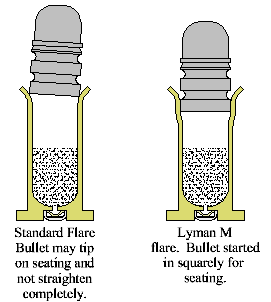You are using an out of date browser. It may not display this or other websites correctly.
You should upgrade or use an alternative browser.
You should upgrade or use an alternative browser.
Accuracy change 45ACP 45 Auto rim
- Thread starter Vet66
- Start date
What kind of dies are you reloading the Auto Rim rounds with? Are they the .45 ACP dies, used to reload your ACP cases?
Yes, they are the same dies with minor adjustments.
So you are using moon clips on the 45 ACP rounds? What are you doing for a shell holder, did you order one specifically for the 45 auto rim? Is your coal staying consistent, checking a lot of them throughout the loading session? Those are the only things I can think of. I use the same rounds for revolver or semi auto, just use moon clips in my 25-2 with no problems.
Hunter Customs
New member
Maybe case mouth tension, either from not sizing enough of the case or the difference in the crimp pressure.
I would try roll crimping the auto rim brass if you are not doing so already.
I would try roll crimping the auto rim brass if you are not doing so already.
I would take fired rounds and weigh the cases and expended primers, then fill them with water and weigh them again. Subtract the dry weights from the wet weights to make sure the internal case volumes are actually the same. Since the brass forming steps are different, they may not be.
I would also measure loaded rounds as to thickness of the brass over the bullet to see if the rattle room is similar.
After those checks, though, assuming they don't produce anything obvious, I'm going to guess that the moon clips are actually helping center the cartridges in the chambers when the firing pin goes forward. Particularly if the bullets are lead, this will affect accuracy by mitigating how tilted the bullets are when entering the forcing cone, something that can increase groups size significantly. This is why, with lead bullet revolvers, you always see the advice to size the bullets to fit the chamber throats within half a thousandth if you can. That lines them up and eliminates tipping.
Assuming that is the actual problem, another thing I've found helpful is using a stepped expander like the Lyman M type to provide the case mouth flare. This creates a step that you seat the bullet into so it starts straight into the case during seating. You can see the effect by examining the slight bulge line in the brass where the base of the seated bullet stops. Using a belling flare, that line is frequently uneven to the point you see it only on one side of the case and not on the other, and more so in some individual rounds than in others, indicating variable degrees of bullet tipping. But using a stepped expander and setting each bullet squarely into its stepped flare, the seated bullet bulges are much more uniform all around, indicating less tilt in the bullet.

I would also measure loaded rounds as to thickness of the brass over the bullet to see if the rattle room is similar.
After those checks, though, assuming they don't produce anything obvious, I'm going to guess that the moon clips are actually helping center the cartridges in the chambers when the firing pin goes forward. Particularly if the bullets are lead, this will affect accuracy by mitigating how tilted the bullets are when entering the forcing cone, something that can increase groups size significantly. This is why, with lead bullet revolvers, you always see the advice to size the bullets to fit the chamber throats within half a thousandth if you can. That lines them up and eliminates tipping.
Assuming that is the actual problem, another thing I've found helpful is using a stepped expander like the Lyman M type to provide the case mouth flare. This creates a step that you seat the bullet into so it starts straight into the case during seating. You can see the effect by examining the slight bulge line in the brass where the base of the seated bullet stops. Using a belling flare, that line is frequently uneven to the point you see it only on one side of the case and not on the other, and more so in some individual rounds than in others, indicating variable degrees of bullet tipping. But using a stepped expander and setting each bullet squarely into its stepped flare, the seated bullet bulges are much more uniform all around, indicating less tilt in the bullet.


